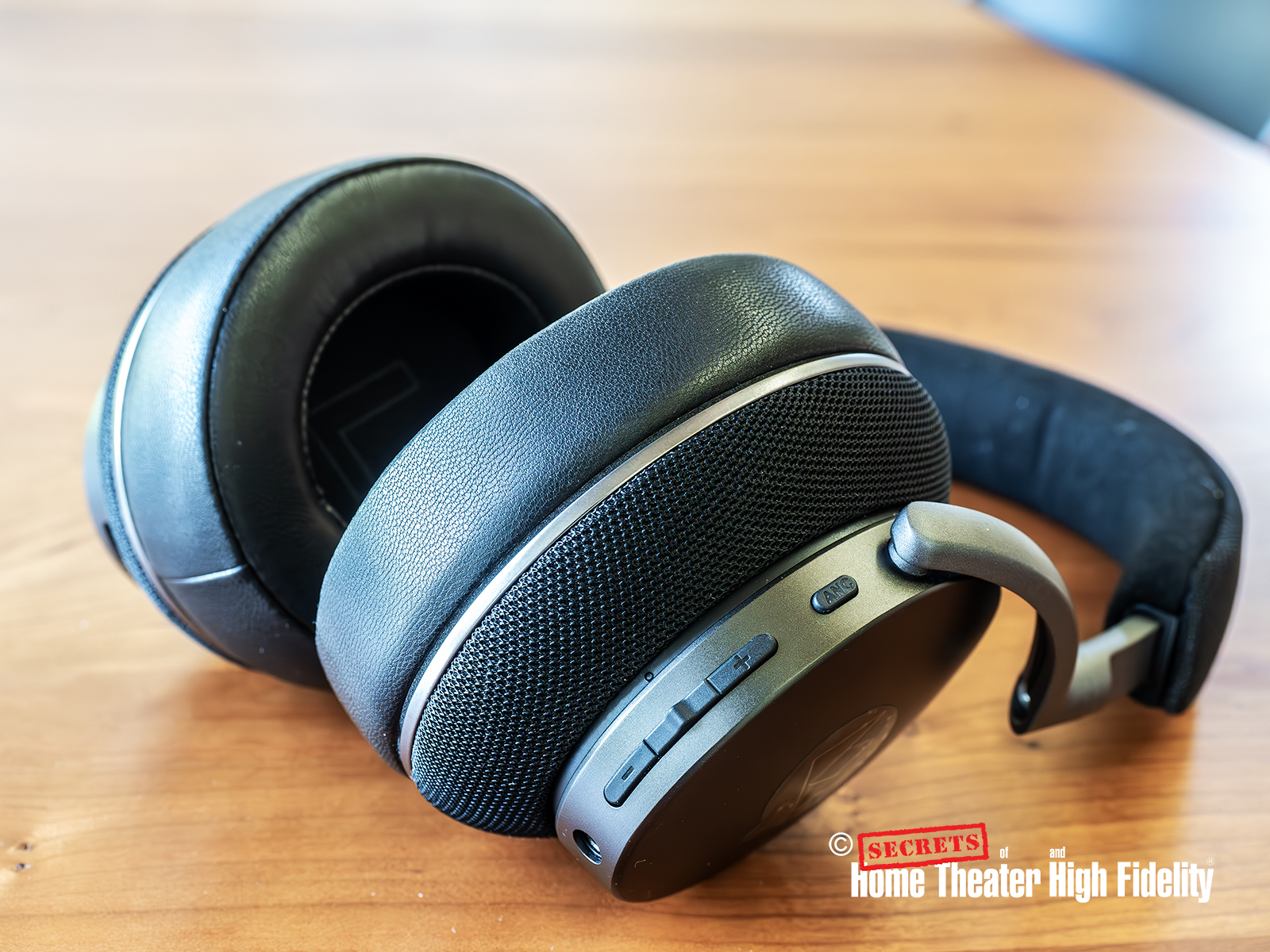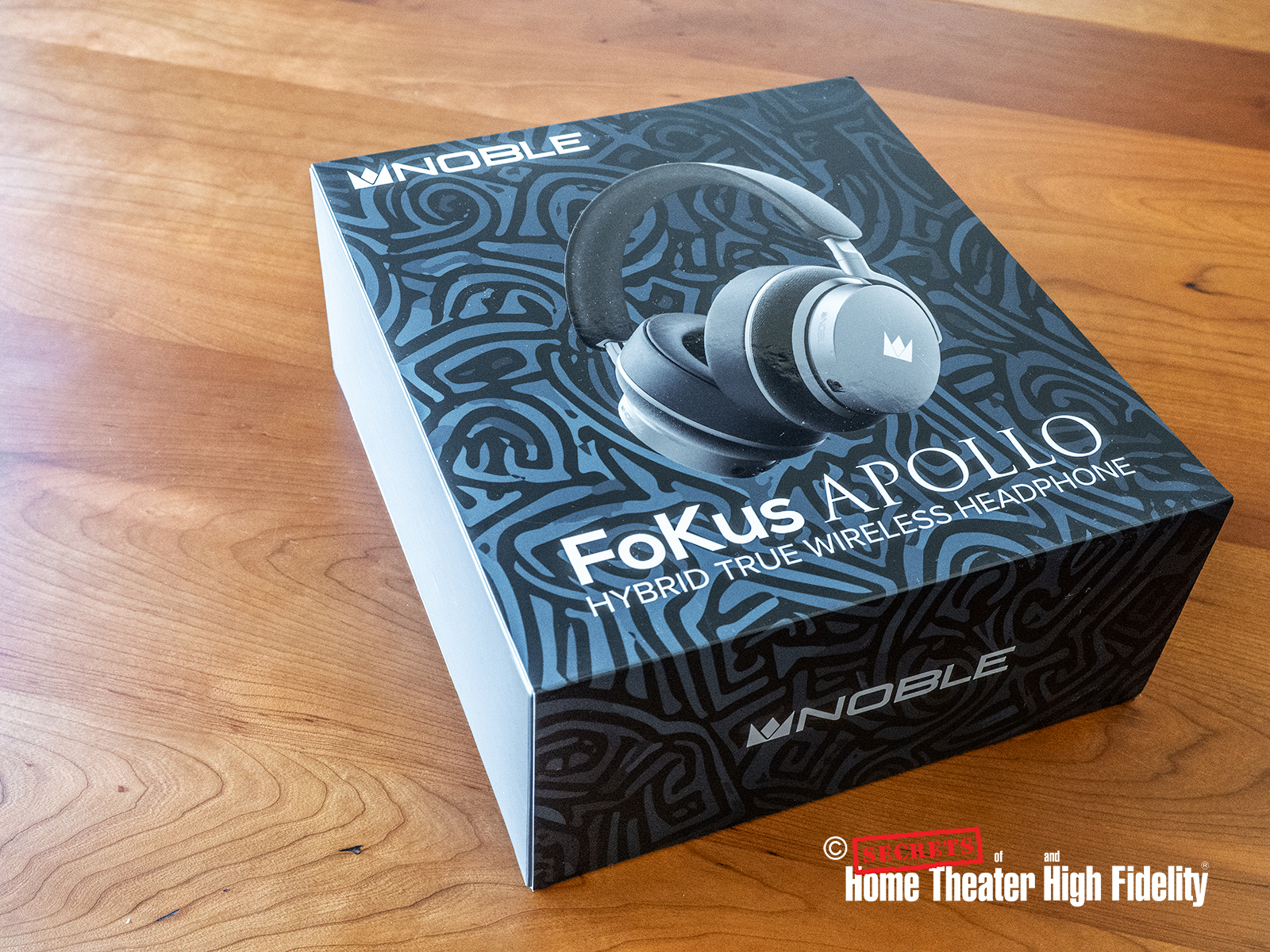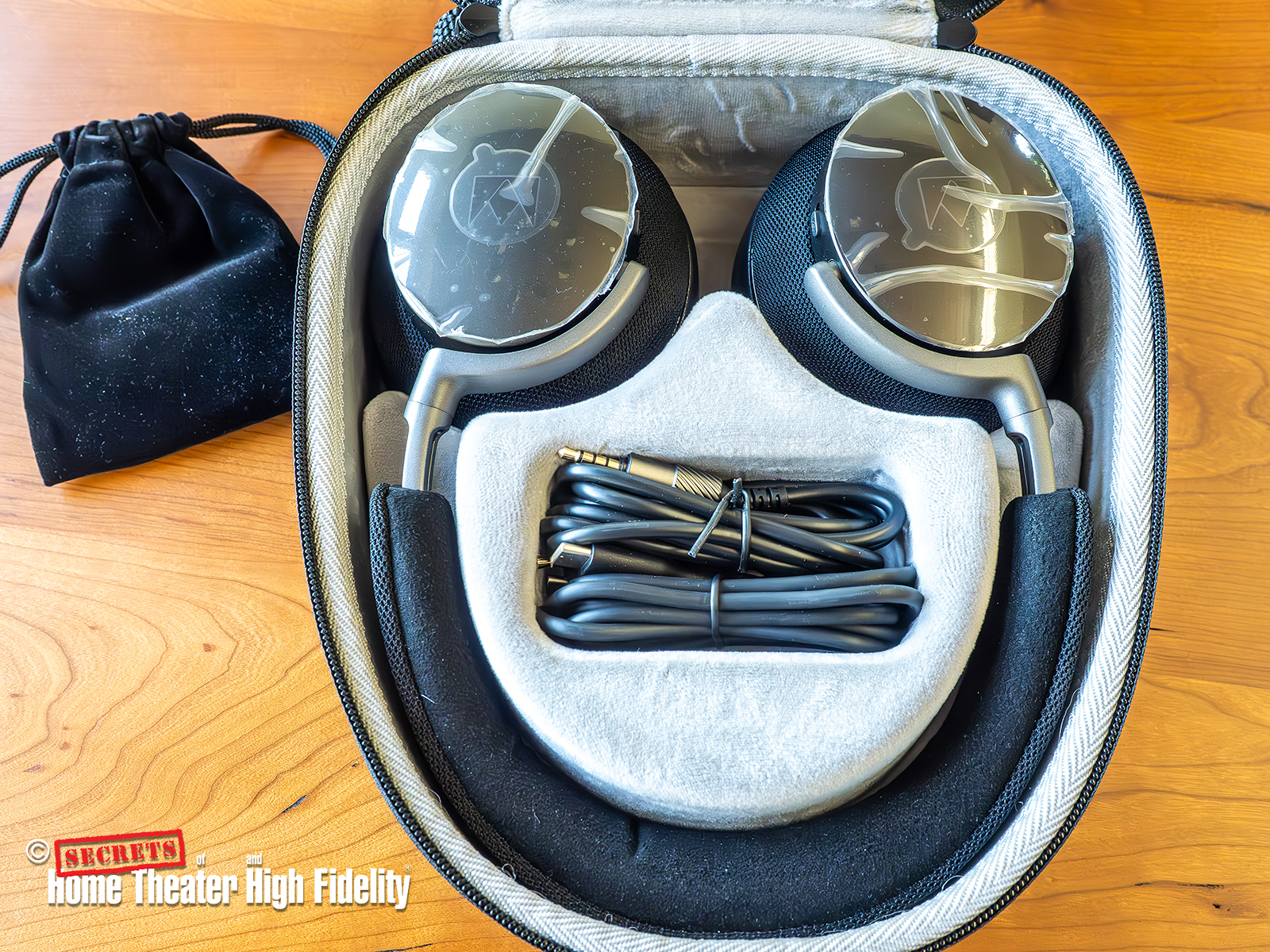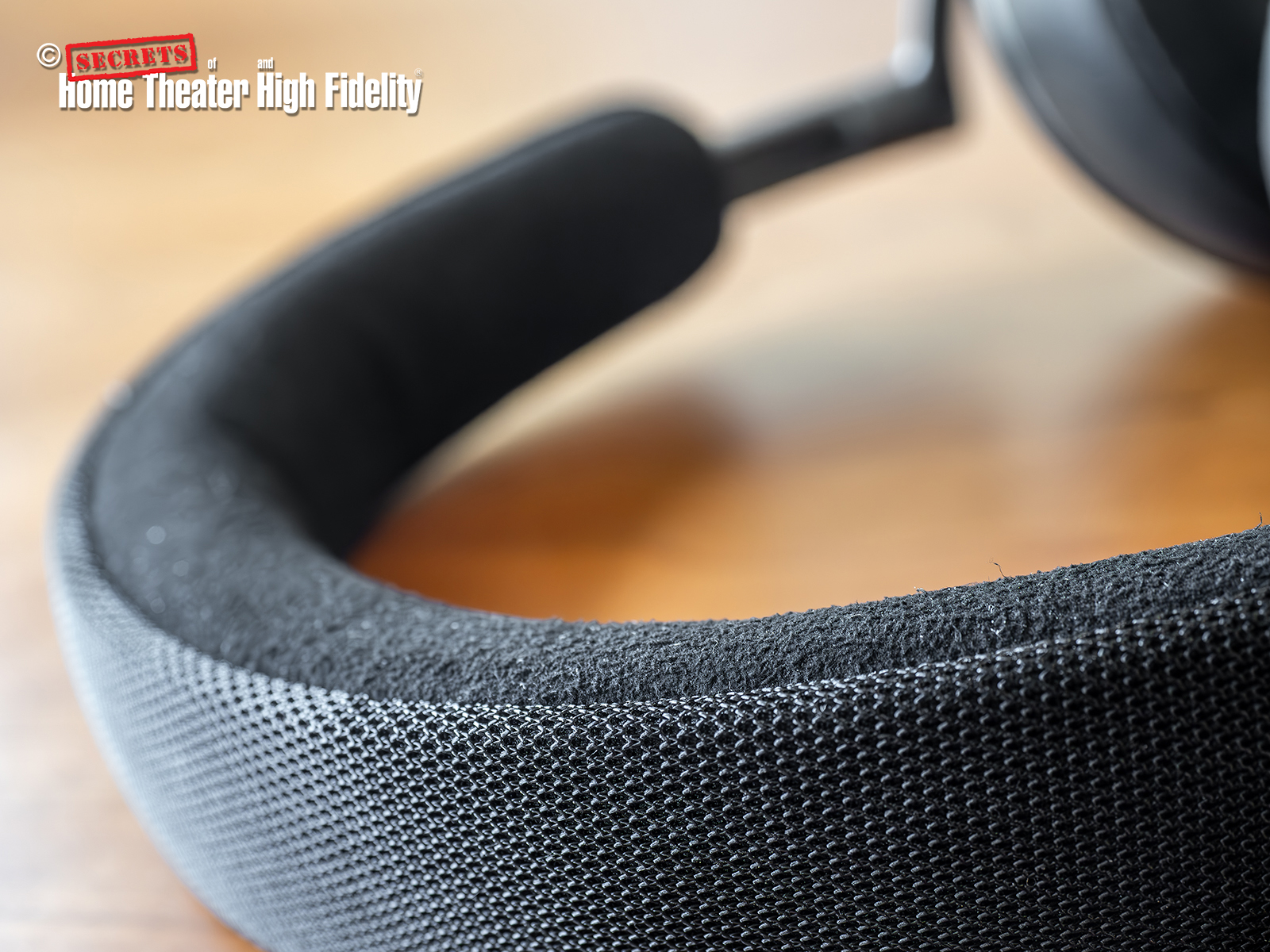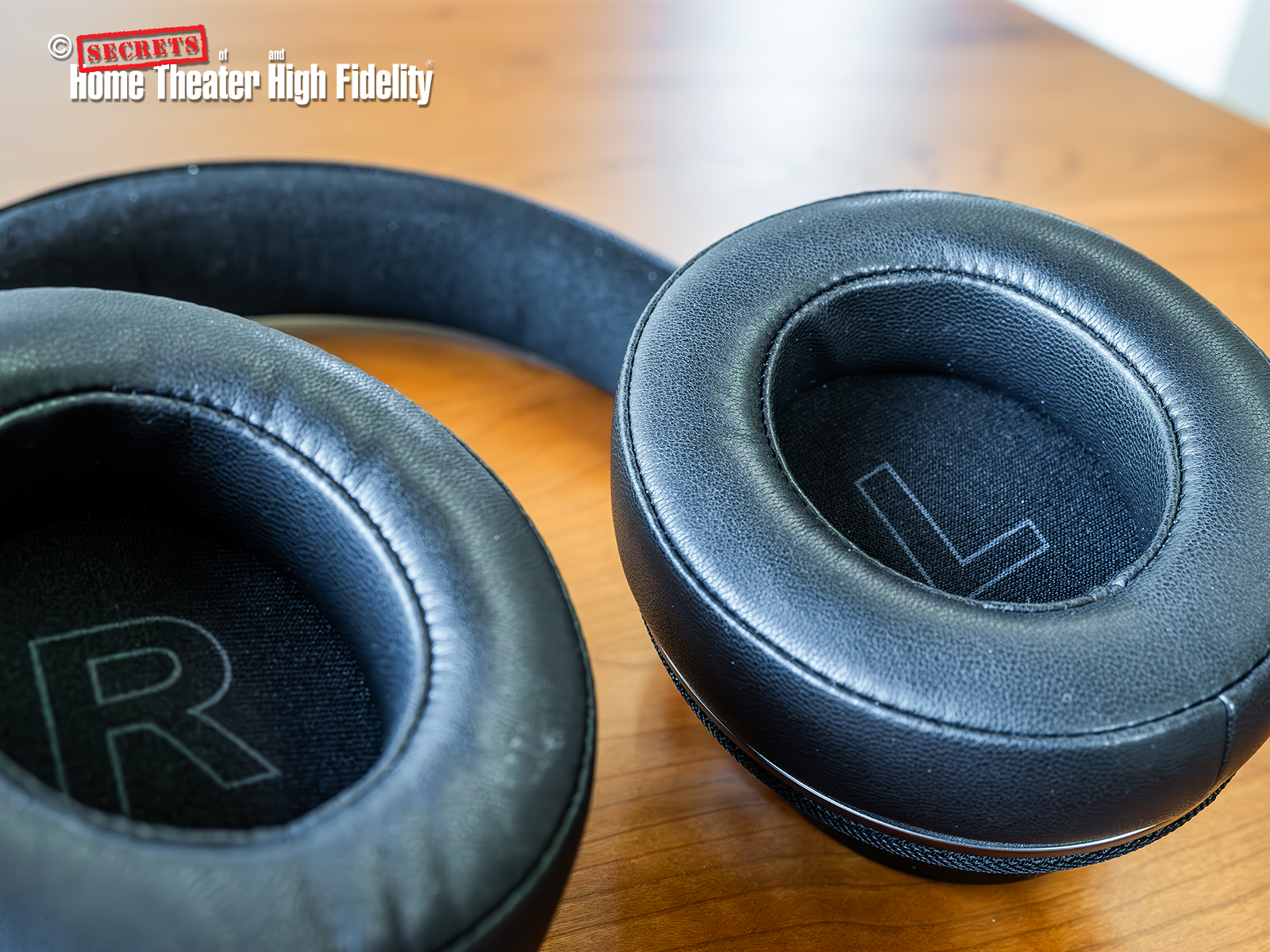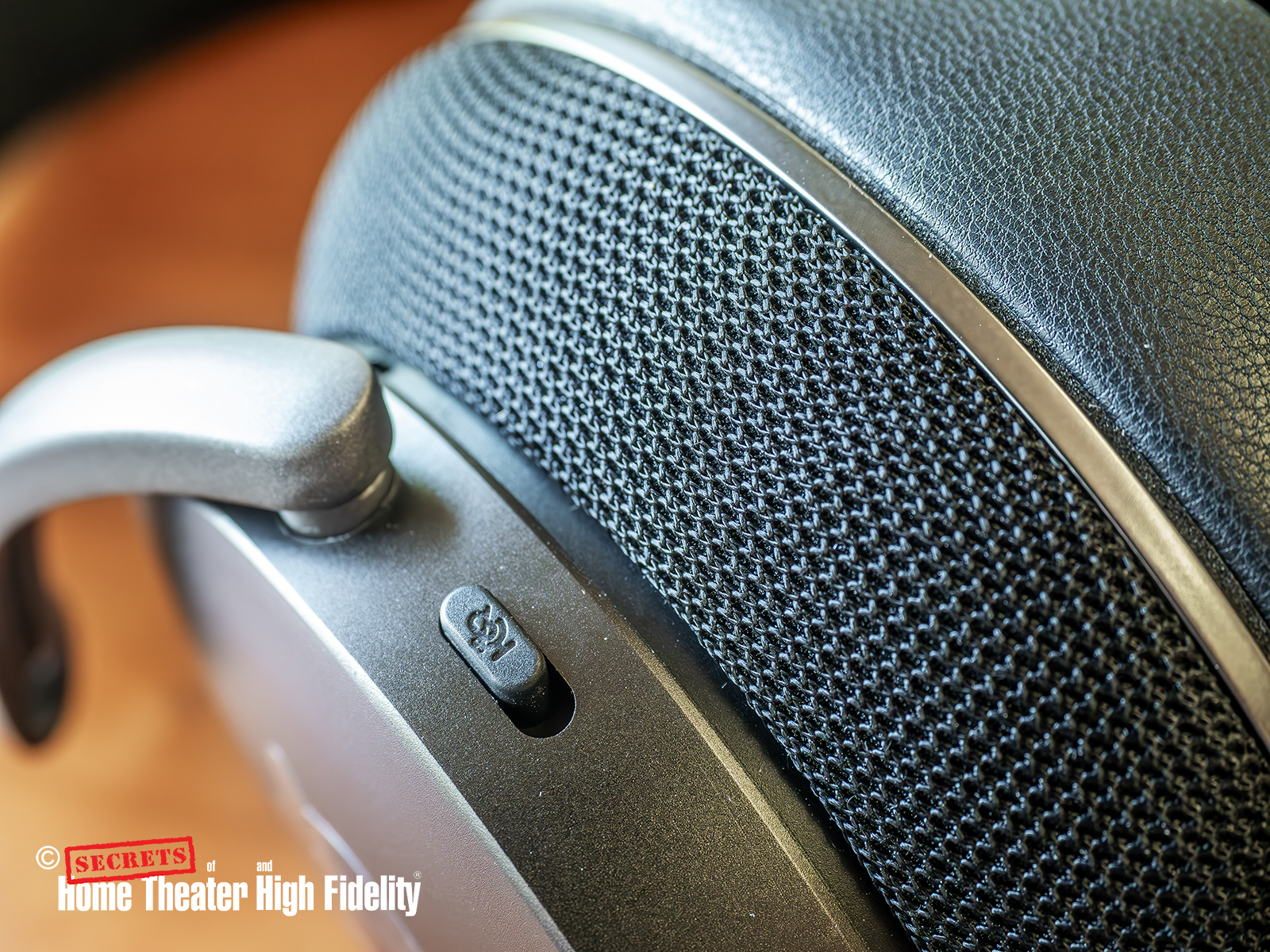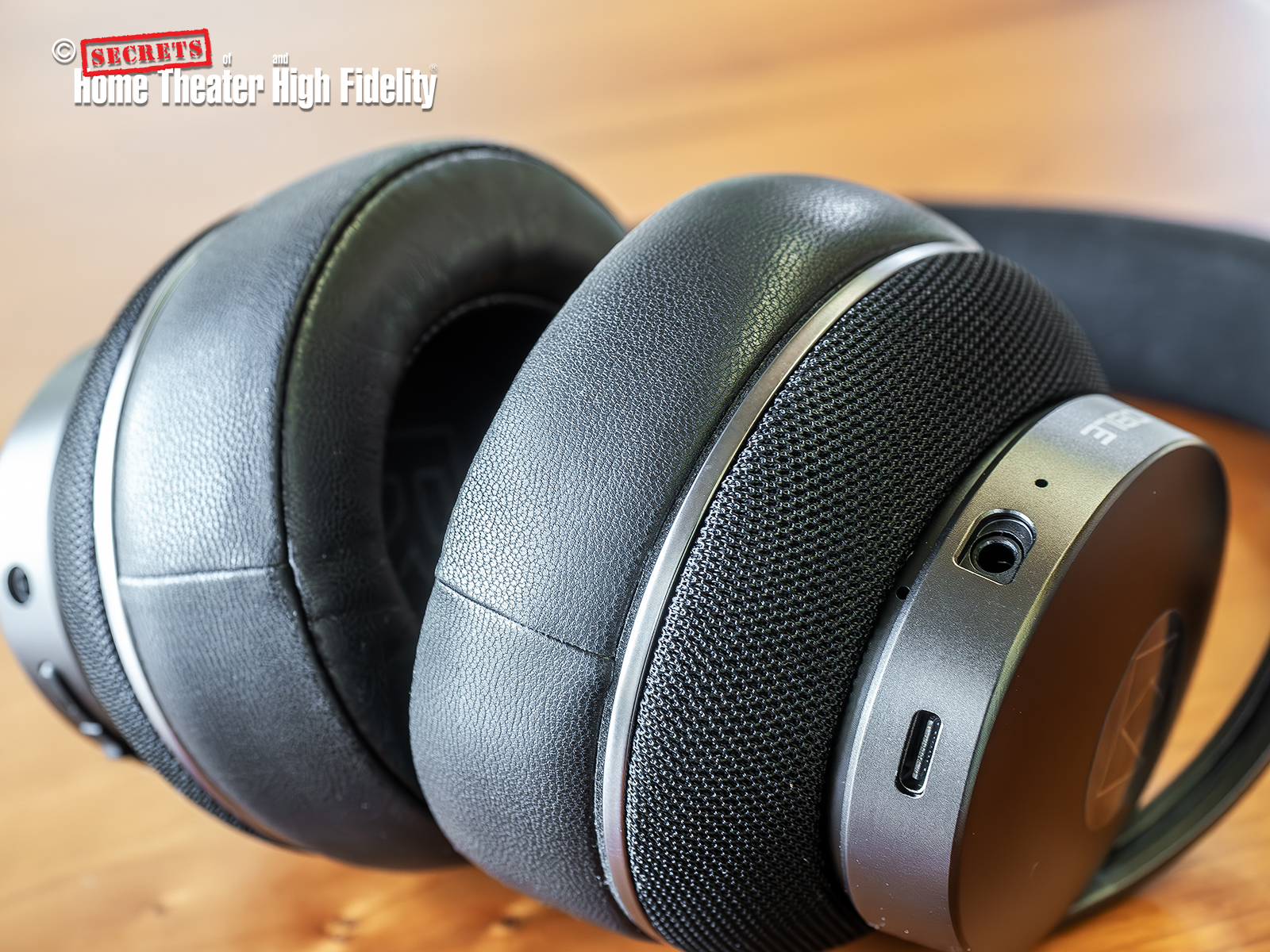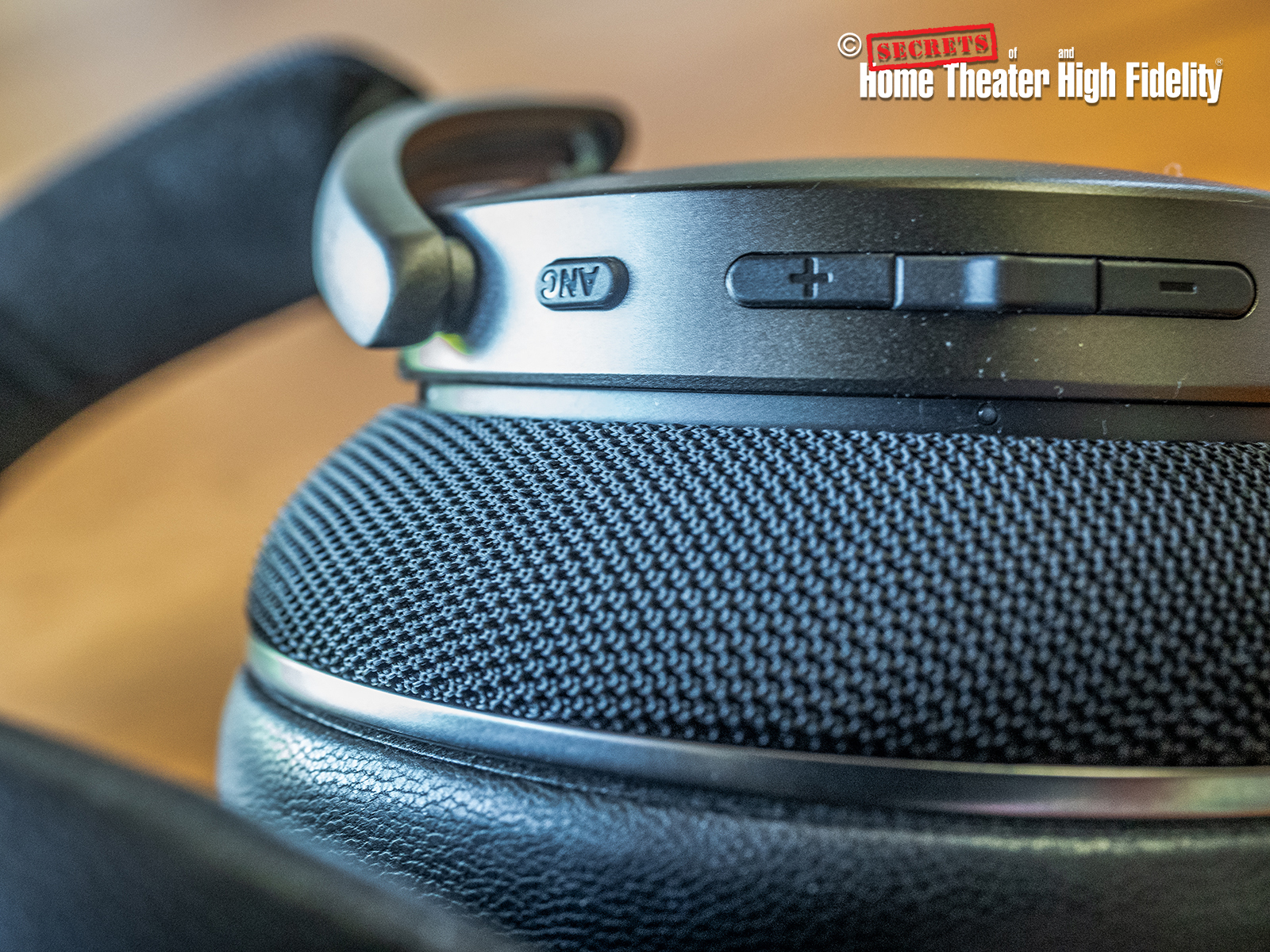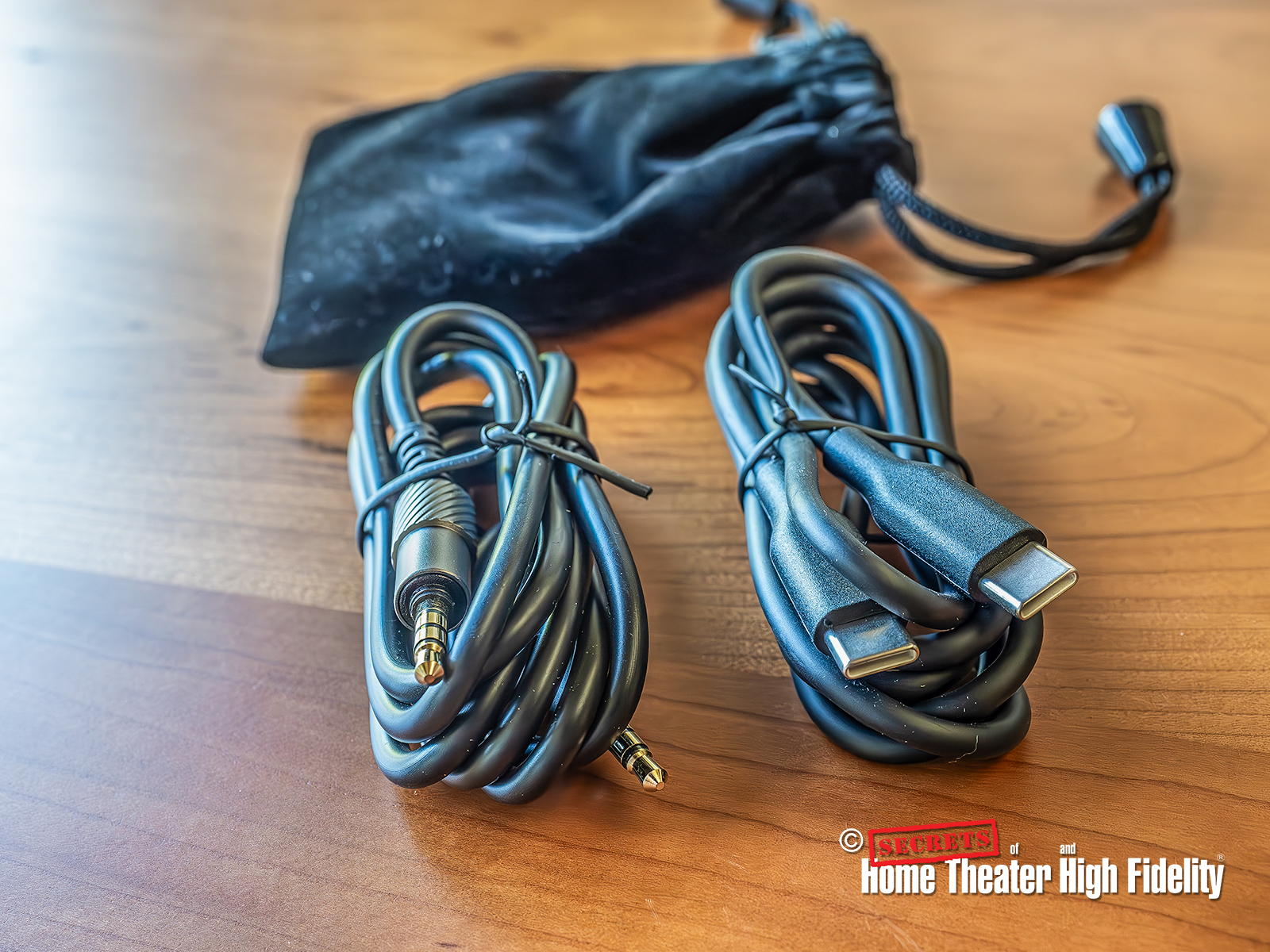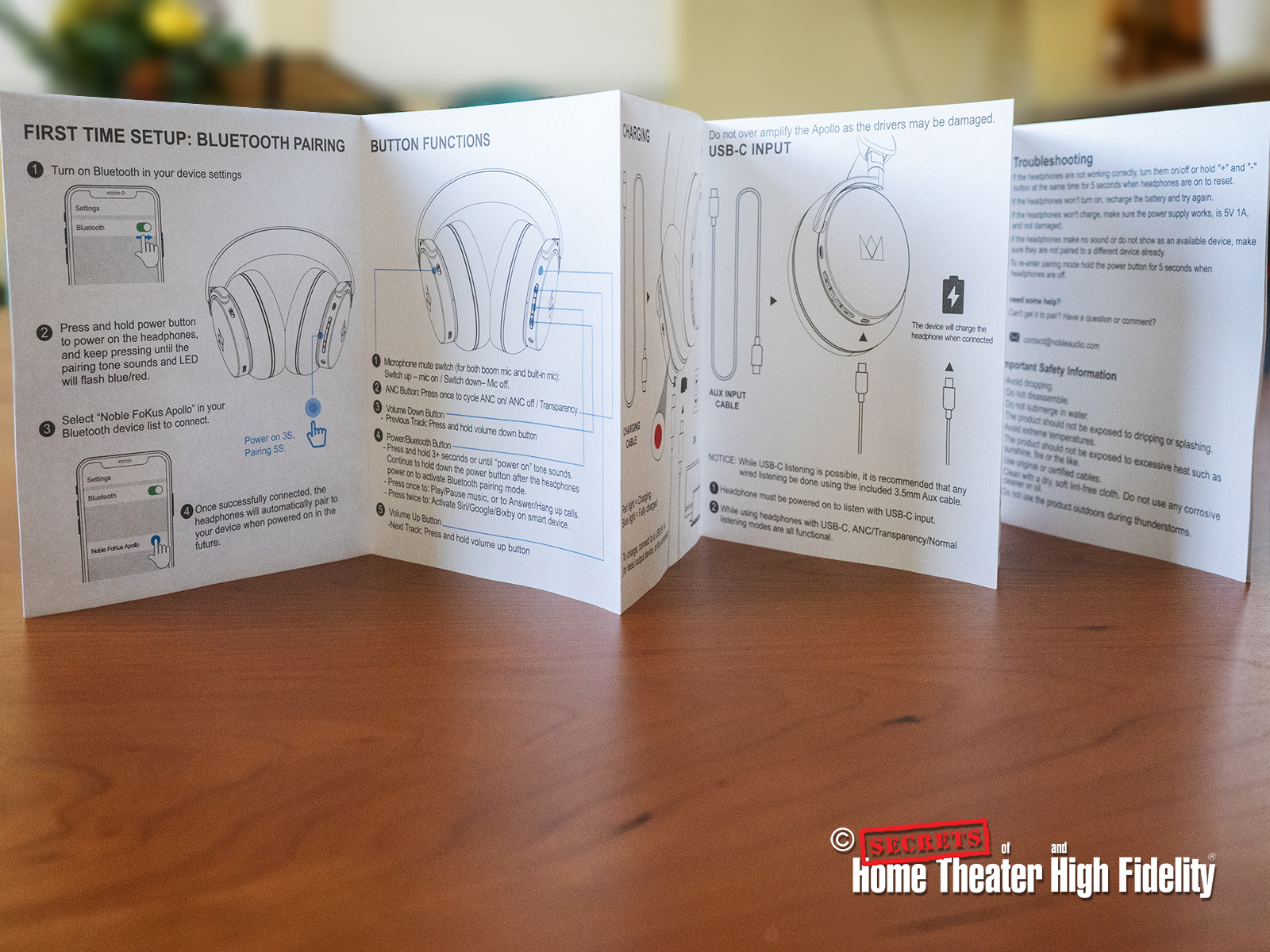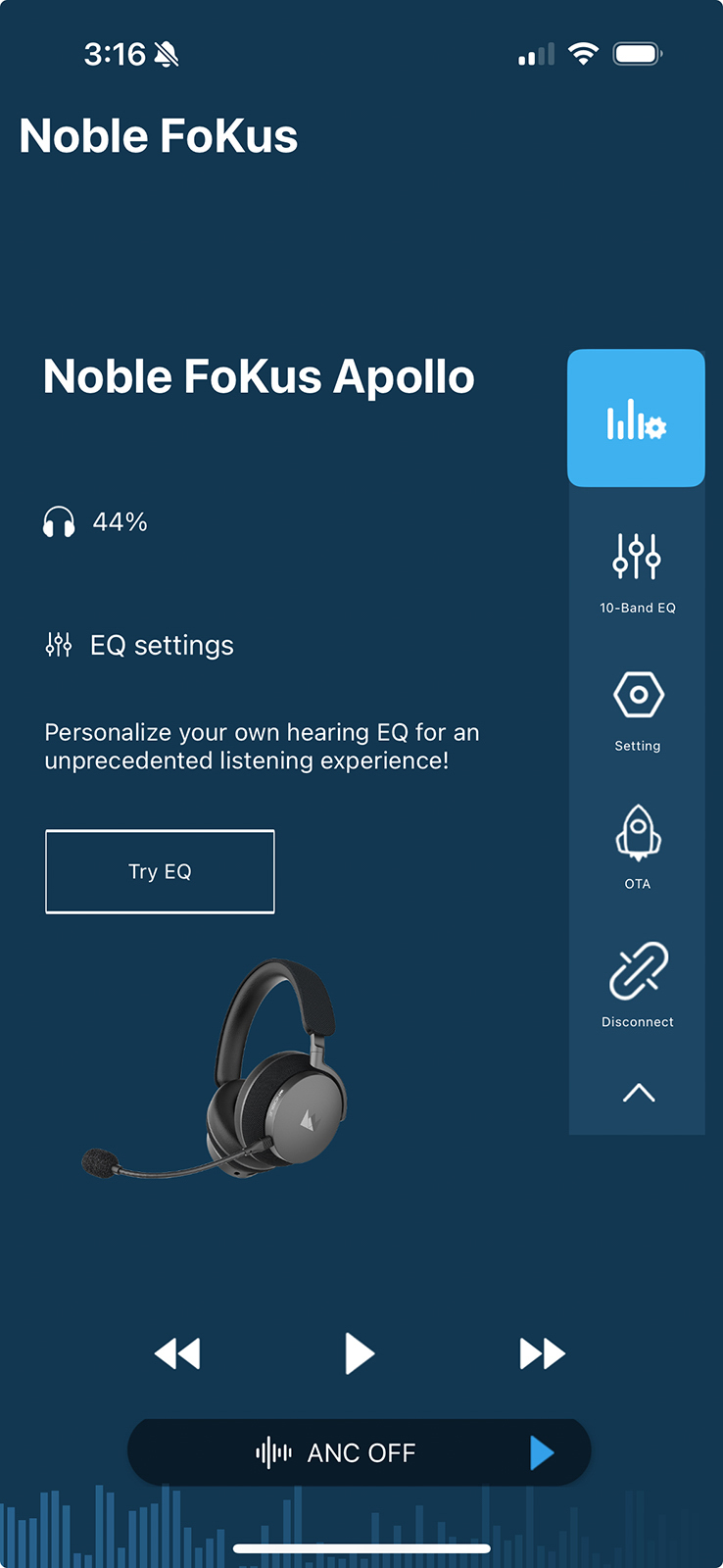Continuing with their passion for innovation, the folks at Noble have entered the over-ear headphone market with the Noble FoKus Apollo, the world’s first hybrid wireless Bluetooth headphone that features both a dynamic and a planar driver. In general, I prefer open-back planar magnetic headphones over closed-back dynamic driver headphones, as I am a fan of delicacy, detail, and finesse over a strong bass emphasis. So, I was intrigued by the introduction of a closed-back wireless ANC headphone that has both a 40mm dynamic driver and a 14.5mm planar magnetic driver. I do enjoy a neutral to warm sound profile, and a wireless ANC Bluetooth headphone with a well-controlled bass that also has the crystalline highs I prefer would be an intriguing headphone.
The hybrid dynamic driver paired with a planar magnetic driver was what captivated me. I find most over-ear dynamic headphones to be somewhat lacking in clarity in the highs, but these headphones delivered the crystal-clear highs that planars are known for. In addition to the hybrid sound, I found the 80-hour play time to be the real deal. Noble says 60 hours with ANC on, but even using ANC, the battery just kept on going. This would be an exceptional travel headphone. Even with ANC off, there was very good sound isolation.
Noble FoKus Apollo Hybrid True Wireless Headphone
- The hybrid dynamic driver and planar magnetic driver arrangement. Strong bass and crystal highs offering the best of both worlds.
- Bluetooth 5.3 with LDAC, AAC, aptX, aptX HD, and SBC codec support. Good ANC and transparency modes. Uses one of the most advanced Qualcomm chips.
- Removable boom mic for gaming and phone calls.
- Onboard mute switch that works for all the mics and the boom mic.
- Excellent call quality both with and without the boom mic.
- Can be used as a wired headphone even without the battery, using the 3.5mm Aux cable.
- Very well thought out accessories including a USB-C cable, 3.5mm Aux cable with adaptors including a two-prong airline plug, a 6.5mm and a 4.4mm adaptor for headphone amps, and a detachable boom mic.
- A sturdy carrying case that is well-padded for secure travel.
- Mobile Noble FoKus app that includes EQ presets and manual EQ.
- Comfy Alcantara headband with good adjustability that was comfortable for hours of listening. Plush protein leather and memory foam earpads provide a good seal even while wearing eyeglasses.
- Sturdy but light anodized aluminum frame. Very light at only 326.02 grams; some of the lightest I’ve worn.
Noble Audio is a Texas-based, family-owned company established by Dr. John Moulton, an audiologist. His knowledge of the anatomy of the ear and his love of audio resulted in the first truly beautiful IEM designs that started winning awards as soon as they were introduced to the audio world. The Kaiser 10 (K-10) was launched in November 2014. They were the first to introduce hand-made jewel-like IEMs and the first to put 10 drivers into each earpiece (the K-10). They make both universal and custom-fit wired and wireless models, as well as various accessories, like cables and ear tips.
I was mesmerized by the stunningly beautiful IEMs made by Noble Audio when I made my first trip to CanJam SoCal in 2023. They stood out even among the wildly colorful forms of the other IEMs at the show. I also met Jim, the brother of founder, Dr. John “the Wizard” Moulton, and his charming and welcoming partner Fumie. Their warm Texas-style was welcoming in the crush of overwhelming noise and dazzle at the show.
At CanJam SoCal 2024, Noble Audio and the charming Moultons were high on my list of must-see vendors. They were previewing their first over-ear headphones. I thought that was a bold move given their success and dominance in the IEM world. There are many high-end wireless ANC headphones on the market, and I wondered how the Moultons planned to compete in the crowded marketplace. It all made sense when I saw that they had made the world’s first hybrid driver wireless headphones. Given their pioneering work with multi-driver IEMs, it made sense. The innovation they brought to the IEM world was now being brought to the headphone world.
When I was asked if I would like to review the Noble FoKus Apollo, I was thrilled to be given a chance to spend time with these intriguing headphones. I love getting the opportunity to listen to cutting-edge designs, and this is the first Noble Audio product we have reviewed here at SECRETS.
Hybrid Dual Driver arrangement:
40mm dynamic driver plus 14.5mm planar magnetic driver.
Connectivity:
Bluetooth 5.3.
Multipoint Connection.
Supported Codecs:
SBC, AAC, LDAC, aptX, and aptX HD.
Wired Connection options:
USB-C, airplane adaptor (USB-C cable required), and auxiliary cable.
Battery Life:
Up to 80 hours without ANC, up to 60 hours with ANC.
Noise Cancellation:
Active Noise Cancellation (ANC): -20 dB to -35dB reduction and Transparency Mode.
Chip:
Qualcomm QCC3084 with Ultra-Low Power ANC.
Build Materials:
Frame, anodized aluminum. Earpads, replaceable memory foam protein leather.
Headband, Alcantara material.
Number of microphones:
6.
Removable Boom Mic.
A detailed and easy-to-read manual.
Noble FoKus mobile app is compatible with EQ settings and controls.
MSRP:
$649.00
Company:
SECRETS Tags:
noble, fokus, apollo, wireless, anc, headphones
Secrets Sponsor
The Noble FoKus Apollo headphones came packaged in a sturdy cardboard box that had, quite possibly, the most information about pretty much everything one could want to know about the headphones printed on the back. I briefly had the thought, “Why am I reviewing these? All the information is right here…” But y’all want to know what they sound like, and until someone invents a scratch and hear patch for the packaging, reviewers do come in handy.
The headphones and all the accessories came packaged inside a handsome grey tweed case. Opening the zippered case revealed a honeycomb-padded lid, and the headphones and accessories were tightly nestled within.
Lifting the Apollos out, I was surprised by how light they were. With their anodized aluminum gun-metal grey frame and black fabric-covered earcups and padded black Alcantara material headband, the headphones are very chunky and solid-looking and appear to be heavier than they are. The earcups swivel vertically and tilt horizontally. The cushy headband slides up and down the aluminum frame with numerous clicks to provide plenty of adjustment to fit a wide range of heads. The oval earpads are premium protein leather and memory foam and are very forgiving for wearing eyeglasses while keeping a good seal. The earcups are moderately deep, with left and right clearly marked with large white letters. They are rather faintly printed and in a dark room, hard to see. I relied on feeling for the controls on the right ear cup to know right and left when putting them on.
All the controls for operating the headphones are well-defined and easy to slide or push as needed. The left earcup has a sliding on/off switch for muting the mics, as well as the mic port and USB-C for charging and audio. The right earcup has two controls: a small button at the top that controls ANC options, and a large button for the other controls. The raised center of the large button is the power and Bluetooth pairing button, as well as play/pause, answer/hang up calls, and activate voice assistants on smartphones. The bottom section of the button is both the down volume and the previous track control. The top of the button is for volume up and the next track. The AUX port is located below the button.
These actions are controlled by a rather confusing combination of presses, both in number and duration. Fortunately, the well-written and very detailed line drawings of the manual got me up and running in no time.
The Noble FoKus Apollo is a Swiss army knife of a headphone. Noble included pretty much any connector-adaptor one could want to use with the 3.5mm Aux cable for any headphone amplifier that has a 6.5mm or 4.4mm port. This allows the Apollo to be used either as a stellar full-featured Bluetooth headphone, but also as a wired headphone that can be used even when the battery doesn’t have a charge (pretty rare, considering the 80 hours of playtime without ANC/ 60 hours with ANC. Also included is a USB-C to USB-C cable for charging the Apollo, which can also be used to plug straight into a USB-C mobile device, and a two-prong airline adaptor. To me, this says the folks at Noble plan for this to be both an excellent set of cans for travel, but also an audiophile-level wired headphone as well.
The headphones arrived with about 80% charge. I topped off the charge using the included USB-C to USB-C cable, which gave me time to take out the adaptors from the black velvet bag, untie the AUX cable, and remove the protective film from the earcups and study the very well-drawn manual. The manual is accordion folded, which I prefer over a booklet manual. The sections take you step by step, starting with first-time set- up and Bluetooth pairing. Though the manual doesn’t mention it, there is a mobile app available on all mobile app stores. The Noble FoKus app provides easy controls for ANC and EQ settings, both manual and pre-programmed for the most common music genres. I found the default setting to be the most enjoyable and natural for my taste, but the manual sliders will give a great deal of adjustment to those who like to play around with fine-tuning their music. The battery charge percentage is easy to see on the home screen and turns red when it is getting time to charge. It took a long time to finally see the charge percentage drop as the promised 60-to-80-hour charge time seemed accurate, if not a little modest. I will say, however, that the Apollo lacks an auto shut-off, so if you just leave them on, the battery will take a hit. The app also has music controls, freeing up the need to fiddle with the tiny multi-function button on the earcup. It is through the app that firmware updates are done, and, in fact, there was an update right out of the box. I appreciate apps that keep it simple, and the Noble FoKus app is basic with a logical layout that I appreciated.
Bluetooth pairing was not intuitive and required looking for a very tiny light. White when turning on, then blinking blue/red while pairing the Bluetooth. A pairing tone will sound when connected. Once the Apollo paired with my iPhone, it stayed paired and was easy to use after that. If there is going to be another version of the Apollo, I would love to see a larger light.
The AUX cable provides passive listening even with the headphones turned off (though ANC, transparency, and volume control will not be available). Using the 4.4mm adaptor, I listened to music through the Topping DX7 Pro. I think this feature makes this a good travel headphone since you wouldn’t be dependent on the battery. Take a dongle DAC to use with the AUX cable, and you have a very nice travel headphone. It is possible to listen to music by using the USB-C cable, though it is provided primarily as the charging cable, and the Aux cable is recommended for music. An interesting point: I usually prefer wired headphones to wireless, yet in this case, though the audio was fine through the AUX cable, I think these are clearly Bluetooth headphones, and maybe because the DSP operates with Bluetooth, music sounded fuller and more detailed.
The Noble FoKus Apollo is a compelling headphone. The addition of the planar driver adds a clarity and spaciousness that widens and opens up the soundstage beyond what I would associate with a closed-back headphone. Not only did I enjoy all the qualities that make it a great travel headphone, but I can see this being someone’s primary headphone.
Since I happen to have two similarly priced Bluetooth ANC headphones, I spent some time comparing features and sound to see how the Apollo can compete with well-regarded headphones like the Apple AirPods Max and the Bowers and Wilkins Px8 that I reviewed for Secrets.
My preferred headphones are planar magnetic and open-back. When I’m listening to well-recorded music, I want to hear every bit of information available. I’m looking for details and a generous soundstage with room for precise placement of the instruments and voices. I also want to hear/feel the depth and richness of the bass produced without bloat, which I find can be a liability with a closed-back dynamic driver headphone. I was curious to hear if the 14.5mm planar driver in the Apollo could bring back some of that detail and clarity that both the AirPods Max and the Px8 lack to some degree. That was the first surprise when first listening to the Apollo. There were clear, unmuffled highs I don’t usually experience with closed-back headphones. There was also a wider soundstage than either the AirPods Max or the Px8 delivers. The 40mm driver was the dominant force; however, as the headphones seemed to be tuned for folks who like their bass strong. I EQ’d the bass down a little as it seemed to overpower the delicacy of the planar highs, and occasionally it felt like there was a gap in the transitions from the low to highs, though this might just be me adjusting to a different sound profile than I usually listen to. The folks at Noble are experts at hybrid driver designs that they pack into their IEMs, and considering this is their first foray into over-ear headphones, I think they did a good job getting those two drivers to play well so close together.
The AirPods Max sounded a bit muffled and blurry compared to the Apollo, something I hadn’t noticed before. However, they have such easy controls and effortless connecting to my mobile devices, they win out on the ease of use compared to the Apollo. However, the reach of Bluetooth when away from the source of music goes to the Apollo. I was able to venture much further before the signal would begin to break up. I’m not surprised since the Apollo sports the advanced Qualcomm chip and uses Bluetooth 5.3.
Though Noble makes stunningly beautiful IEMs, they went for a subdued black and grey design, no-nonsense and serious. I hope that they include some of that beauty in future Apollos, but for now, the Px8, with its supple burgundy leather, wins for looks and an advanced app. The Bowers and Wilkins app is refined and can link directly to music apps like Qobuz and Bowers and Wilkins’s own music program. However, on sound, it’s a tough call. On the Px8, I had to EQ the bass way down as it tended to get bloated, which didn’t match the refined profile otherwise. However, there is a lush, warm quality that is well balanced, which makes the Apollo at times seem a bit thin in the highs. But the Apollo has very well-controlled bass in comparison, and if Noble continues to develop this line, I think the Apollo will be a true contender all around, as it shows just how much adding a planar driver can contribute to a true audiophile experience. I think the fact that I turned the bass down on both the Px8 and the Apollo headphones points to the fact that I’m not a bass-head, so your mileage may vary on whether you think they are too bass-emphasized.
In use, I have two small gripes. Both the AirPods Max and the Px8 have excellent wear detect/proximity sensors, and the Apollo doesn’t. I appreciate being able to take off headphones and have the music pause and then start up again when I put them back on. Also, the Apollo doesn’t have an auto shut off, and turning them off requires a long hold of the power button until that tiny white light flashes on, so if left on, it will take a hit on the battery. I do keep in mind, however, that this is the first generation of an advanced design, and I hope future designs will provide those conveniences. When it comes to ANC and transparency, all three headphones did a good job. Given the audiology background of Noble, I wouldn’t be surprised to see some advances in that domain with future versions.
The Apollo is the only one to offer a boom mic. And for gamers, this makes these headphones an attractive option as latency is very low, and the wider soundstage and precise placement would make for compelling audio. However, according to someone I was speaking to on the phone while using the Apollo with the boom mic, he preferred the audio without the mic, reporting it made my voice a little harsh and crunchy sounding, which surprised me, as I assumed the mic would be superior. If you are going to use the Apollo while working and making calls, the boom will be handy, and any drop in voice quality may not even be noticeable to most users.
While exploring various genres of music, I found the Apollo lively and fun. The addition of the planar driver brought responsive mids and highs into the mix, and though at times the highs felt a little too piercing on some recordings, most of the time they provided a much broader frequency range and sound stage that less capable closed-back headphones provide. I don’t usually seek out bass-forward tracks, but the Apollo really dug down and showed me I may need to lighten up on my view of powerful bass.
I used Bluetooth from my MacBook Pro for evaluating music.

Boz Scaggs, “A Fool To Care”, CD 16-Bit, 44.1 kHz-Stereo, Qobuz
In honor of the Texas roots of the Noble/Moulton folks, I thought I would start things off with Boz Scaggs, who is from Plano, Texas. Boz is a Grammy-winning blues, jazz, rock, and R&B singer/songwriter. His music is always well recorded and engineered, so Boz is on my list for giving headphones a chance to show what they are capable of. He records with some of the finest musicians in the industry. I first heard Bozz when he was with the Steve Miller band, here in the San Francisco Bay Area. So, I think he twined himself into my early music-loving DNA.
This album was recorded over four days in Nashville at the Blackbird Studio with a collection of stellar musicians. It is a collection of covers of grand old songs spanning decades, such as “Rich Woman”. The song “Rich Woman”, first recorded by Li’l Millet and his Creoles in 1955, is sonically complex with B3 organ, horns, electric guitar, classic New Orleans rhythms, and Bozz’s R&B-tuned voice channeling steamy Louisiana clubs.
The Noble FoKus Apollo showed their range on this cut. Though the lower notes of the drums and bass guitar are strong, as I expected, what surprised me was how well the Apollo presented the full range of instruments as they joined into the mix. Starting with only Bozz’s voice (and the timbre was excellent), he was soon joined by bass guitar and electric guitars. Then comes the high hats, surprisingly clear and bright, then Hammond B3 organ and horns. This was a lot of music going on, and lesser headphones may have lost some of the separation and clarity, but the Apollo kept each musician in their own space, providing a rollicking song room to boogie.

Billy Idol, “Charmed Life”, CD 16-Bit, 44.1 kHz-Stereo, Qobuz
Billy Idol, the darling of the dance scene of the seedy L.A. of the 80s, somehow survived his personal excesses and in 1990 recorded “Charmed Life”. The song “Prodigal Blues” has a lush sub-bass synth opening the song, and the Apollo did an outstanding job of showing how musical the use of deep bass can be. I was impressed, and like with Bozz Scaggs, Billy Idol’s voice is presented with the texture and nuance his powerful and expressive voice conveys. The synth is a dominant, warm undercurrent, and the drums are crisp (again, I’m thinking the planar drivers are adding their magic). The backup singers are clear. Again, the timbre seems right on with every voice, and each instrument stayed clearly defined.

Hoff Ensemble, “Quiet Winter Night”, An Acoustic Jazz Project, Hi-Res 24-Bit, 44.1 kHz-Stereo, Qobuz
Hoff Ensemble consists of some of Norway’s finest jazz session musicians. Quiet Winter Night was recorded live, in stunning surround sound, in Sofienberg Church, Norway. The quality of this recording is exquisite, and the album is one I use to evaluate headphones. The surround sound is subtle but gives tremendous depth and width to the space. The Apollo really captures the width and depth well, in some ways feeling more like an open-back headphone. Again, I assume that is the planar driver coming into play.
This piece of music showcases Noble’s choice of putting both a dynamic and planar driver into this headphone. Though initially I thought the bass-forward nature of the Apollo would make it better for all the genres that are bass-centric, the airy clarity and detail that the planar brought to the acoustic jazz was lovely.
Secrets Sponsor
Noble has put its own spin on Wireless ANC Bluetooth Headphones, and the FoKus Apollo is a compelling choice for those looking for a great-sounding option that isn’t from the usual suspects.
- Very lightweight.
- Cushy earpads.
- 80-hour battery.
- Generous accessories, including a boom mic.
- Well-built with a classy, understated design.
- Can be used passively with the included AUX cable.
- Hybrid dynamic/planar drivers provide dynamic sound with good mids and delicate highs.
- Very good soundstage for a small over-ear, closed-back headphone.
- Folks who love bass will enjoy the controlled yet punchy bass.
- Advanced Qualcomm Bluetooth chip.
- Good ANC and phone calls are clear and crisp.
- Auto shut off.
- Proximity sensors so that music stops when taking them off and starts up when putting them back on.
- Bigger detection lights.
- Smaller case. It is well made, but just too big. In fairness, they did have to pack a lot of goodies in there.
The folks at Noble have continued their innovative designs with their first over-ear headphone. When I first saw the Noble FoKus Apollo at CanJam SoCal 2024, my first thought was, why is this wildly successful IEM company jumping into such a crowded field as wireless, ANC Bluetooth headphones? The market is flooded with consumer-level versions, and the high-end companies all seem to have added their own to the crowd.
Well, the Moultons are smart. They took their expertise with hybrid driver IEMs and built the Apollo, which is the first dynamic/planar ANC Bluetooth over-ear headphone on the market. And, considering that the Apollo is often sold out, I would say the Moultons know exactly why they decided to enter this crowded market.




